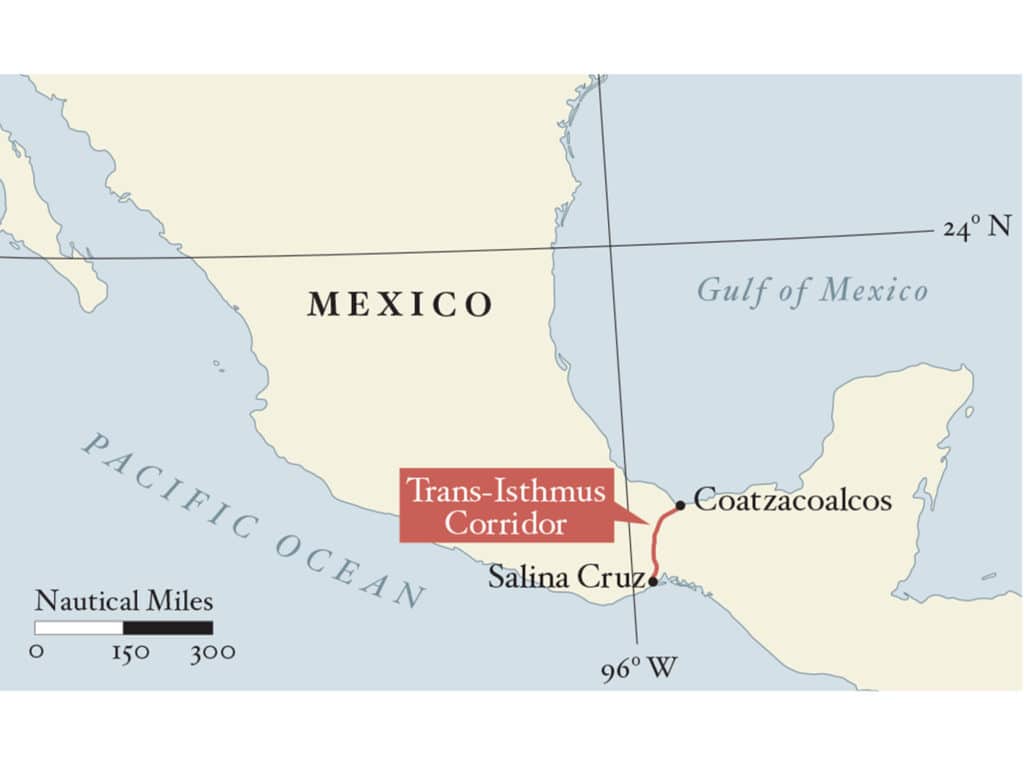
A proposed Trans-Isthmus Corridor project across Mexico would connect the Gulf of Mexico and the Pacific Ocean by rail and highway, which could serve as an alternative to the Panama Canal. When completed, cruisers could potentially haul out and truck their boat the relatively short distance from one side of the isthmus to the other.
President Andres Manuel Lopez Obrador is urging approval to build transportation along the Isthmus of Tehuantepec. Nearly 190 miles across, the isthmus is the narrowest landmass in Mexico. Cargo companies and private-vessel owners view the proposed project as an overland alternative to the Panama Canal, which many cruisers know can be intimidating, expensive, lengthy and sometimes dangerous. Mexico sees the Panama Canal as a monopoly, and this project as an opportunity to help customers with a new route to save time, distance and, potentially, money. By avoiding the canal route, the distance saved could be up to 1,000 nautical miles in either direction, although any cost savings is undisclosed at this time.
RELATED: Sailing to Mexico with the Baja Ha-Ha
The project would include a modern railway and highway to connect the Port of Salina Cruz in Oaxaca’s state on the Pacific with the Port of Coatzacoalcos in the state of Veracruz on the Gulf. Mexico envisions this project as a source of new jobs and increased competitiveness for its economy; it includes wind energy, business parks, telecommunications and services for the region. However, it is not without its critics, which include human-rights groups and environmental organizations. President Lopez Obrador cites a focus on helping the Indigenous people and the economy while protecting the environment—a tall order for a project of this size and complexity. If approved, the world will be watching to see that construction treads lightly because this region has one of the highest concentrations of biological species on Earth.
Historically, the isthmus was first used to haul ships by rail in 1907 when the American Hawaiian Steamship Company pulled its cargo vessels across on the Tehuantepec National Railway, carrying passengers and sugar from Hawaii to New York. This use ended due to politics between the US and Mexico, the Panama Canal opening in 1914, and World War I.
If this project is right for Mexico’s people and economy, let us hope that it will set a standard for major projects globally by also protecting Indigenous people and the environment.








